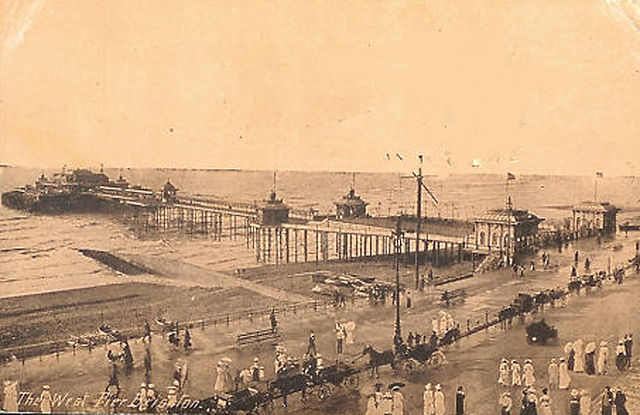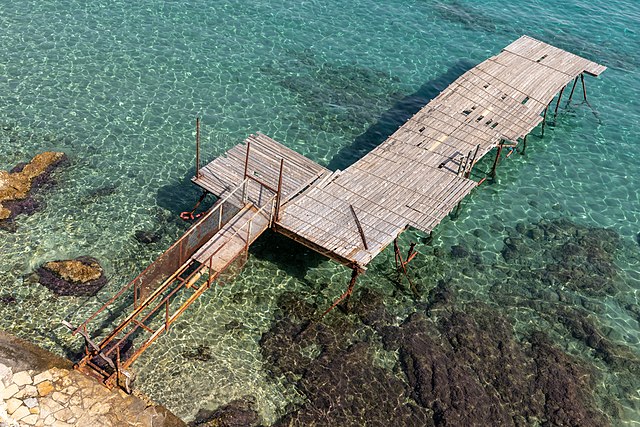The West Pier is a ruined pier in Brighton, England. It was designed by Eugenius Birch and opened in 1866. It was the first pier to be Grade I listed in England but has become increasingly derelict since its closure to the public in 1975. As of 2024 only a partial metal framework remains.
Remains of the West Pier in 2018
The opening of West Pier in 1866 from the Illustrated London News.
West Pier circa 1900. By this time a central bandstand and full-length weather screens had been added. A pavilion had opened in 1893.
The West Pier circa 1920. The pier had gained a new concert hall in 1916, and attracted 2 million visitors between 1918 and 1919.
A pier is a raised structure that rises above a body of water and usually juts out from its shore, typically supported by piles or pillars, and provides above-water access to offshore areas. Frequent pier uses include fishing, boat docking and access for both passengers and cargo, and oceanside recreation. Bridges, buildings, and walkways may all be supported by architectural piers. Their open structure allows tides and currents to flow relatively unhindered, whereas the more solid foundations of a quay or the closely spaced piles of a wharf can act as a breakwater, and are consequently more liable to silting. Piers can range in size and complexity from a simple lightweight wooden structure to major structures extended over 1,600 m (5,200 ft). In American English, a pier may be synonymous with a dock.
A wooden pier in Corfu, Greece
Print of a Victorian pier in Margate in the English county of Kent, 1897






